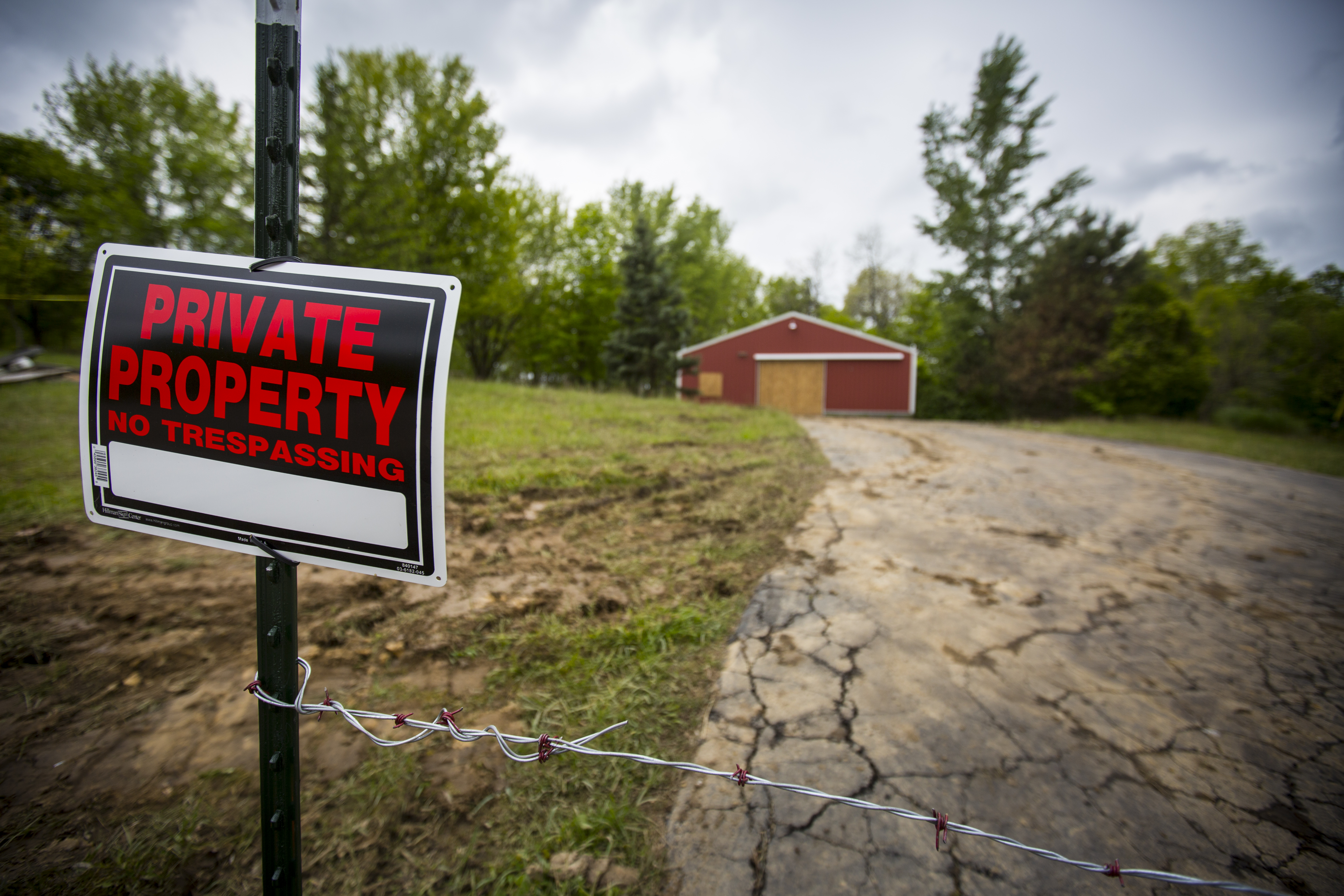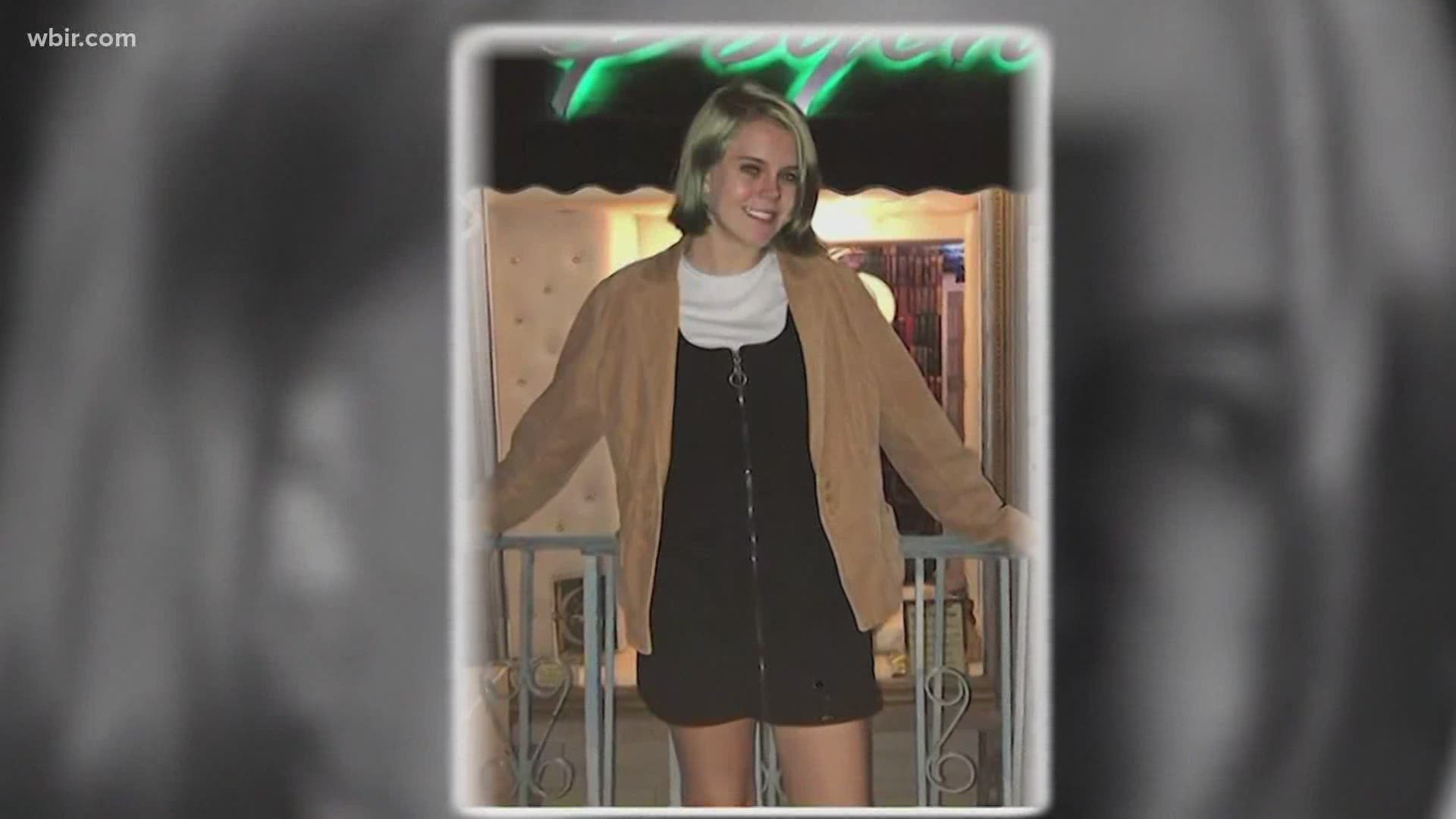PIKE COUNTY, Ohio — Investigators already had whiteboards up, evidence collected and laptops whirring by the time one of the state's top crimefighting bosses walked into the Piketon Community Center the afternoon of April 22.
It was 1:30 p.m. — just five hours and 41 minutes after family members began discovering bodies shot in multiple residences of the Rhoden family in Pike County.
"I walked into the room and there were five analysts sitting there with their laptops inputting data,'' said Thomas Strickrath, the superintendent of Ohio's Bureau of Criminal Investigation, of the community center's transformation into a makeshift command center where an army of cops, forensic scientists and analysts set out that day to catch the killers.
He saw agents from the bureau's cyber-crimes, narcotics and special investigations units. In all, up to 14 crime scene investigators collected evidence at the crime scenes.
Just mere minutes before Strickrath's arrival, another 911 call alerted authorities to the eighth and final body at a fourth Rhoden residence. That body was found in a camper perched on a hillside off a remote gravel road, a few miles from the three other scenes.
There was no question at that moment one month ago: This would be one of Ohio's largest homicide investigations in state history. And the BCI lab and headquarters in London, Ohio, would be central to solving the case.
The Pike County sheriff, with just 13 road deputies, invited the state's crime-fighting experts to help.
"We came in with a surge immediately,'' Strickrath said. "We are a lab on the ready."
He gave a tour Friday of the BCI lab in London, showing how solving the Rhoden family massacre will rest on old-fashioned police work coupled with high-tech sleuthing done, with scientists wearing lab coats working in tandem with those wearing a badge.
Authorities refuse to reveal what they might know. A leading criminologist and a forensic pathologist are following the case from afar and agree on one thing: The killers had a core target, and the other seven people most likely died because of what they knew.
Putting the pieces together
Investigators and experts worked around the clock from the start. In any criminal investigation, regardless of scope or complexity, those first few hours are the most crucial.
The BCI, with labs throughout the state, provides help to any police agency that requests help and has been called in by all 88 counties to date this year, Strickrath said. In addition to crime scene collection, scientists pull fingerprints and work to match them to suspects in their massive database. They pull DNA from evidence and work to match it against other samples to find suspects. Experts study ballistics, narcotics, how blood spatters and mine computers for data.
It's all done in the name of finding and charging suspects. Its investigators also probe officer-involved shootings and public corruption cases, and maintain the state's fingerprint and DNA databases.
In 2015, the BCI:
—Completed 38,522 cases
—Assisted in 961 cases
—Opened 1,2662 new investigations
But the Rhoden case is its "No. 1 priority," Ohio Attorney General Mike DeWine said.
"It's like putting together a 500-piece puzzle. We have no witnesses and we have dead bodies,'' DeWine said in a recent interview. "It's an old-fashioned detective story, now with different abilities," like DNA testing.
"Every clue and tip will be run to its logical end, to get to a valuable piece of the puzzle,'' he said.
When investigators get enough pieces, they begin to interlock them. Slowly, a picture begins to emerge.
Authorities have released few details about the case, which has brought rampant speculation and rumor as well as international media attention to Union Hill Road and nearby small towns of Piketon, Peebles and Waverly, about 90 miles or so east of Cincinnati.
Killed were: Christopher Rhoden Sr., 40; his former wife, Dana Manley Rhoden, 37; their three children, Clarence "Frankie" Rhoden, 20, Hanna Rhoden, 19, and Christopher Rhoden Jr., 16; Christopher Rhoden Sr.'s brother, Kenneth Rhoden, 44; his cousin Gary Rhoden, 38; and Frankie Rhoden's fiancee Hannah Gilley, 20. Many were shot repeatedly, most in the head and some in the limbs.
A newborn, an infant and a toddler were found alive inside two of the trailers.
DeWine has said police found evidence of cockfighting and marijuana grow sites on three of the properties. But has declined to say if that relevant to the case
Family looked at first
A nationally recognized criminologist and a pathologist, well versed in complex homicide investigations, said any criminal activity or potential criminal activity involving the victims is surely being peeled apart by agents. They also said the first people who find victims, family members and business associates are often the first to be scrutinized as potential suspects.
Members of the Rhoden and Manley families have been repeatedly questioned as recently as late last week, including Leonard and Bobby Jo Manley. Leonard Manley is the father of Dana Manley Rhoden; Bobby Jo Manley is her sister. Hers was the first call to 911 after she discovered the bodies of Christopher and Gary Rhoden inside a trailer at 4077 Union Hill Road. After calling 911, she ran to 4091 Union Hill Road and found Frankie Rhoden and Hannah Gilley both dead.
Investigators have possession of the clothes Bobby Jo Manley wore on April 22. They've swabbed her mouth for DNA and taken her fingerprints. They've interviewed her at least four times, she said. Investigators took DNA swabs from Leonard Manley as well and asked him for details related to his whereabouts and those of his family in the hours before the bodies were found.
Taking such samples can occur for a variety of reasons. The two Manleys would have been around the Rhodens' property and homes frequently; possessing their DNA can enable investigators to distinguish it from any other DNA present at the crime scenes.From the start, the Manleys have said they feel unfairly targeted by authorities.
The Attorney General's Office is no longer releasing details on how many pieces of evidence it has seized or is testing, spokeswoman Jill Del Greco said Friday. Previously, officials said previously BCI had processed more than 100 pieces of evidence. Authorities have received and followed up on about 550 tips.
A reason to kill
"Ordinarily in cases with multiple victims the first thing that is looked at is commonalities,'' said James Alan Fox, a professor of criminology at Northeastern University in Boston and author of 18 books including Extreme Killing: Understanding Serial and Mass Murder.
"In this case, they are all family so that's what they will look at, obviously," he said.
Fox, who will include the Rhoden case in an update to Extreme Killing, said investigators will research the background of each victim by determining where and with whom they had been in the hours and days before their death. They will scour email, text and voice messages. They will look at bank accounts and ATM receipts. They will look for animosity, arguments, threats or unusual behavior and activities.
"Obviously, who had a reason to kill them?'' Fox said. Detectives will look most closely at family and business relationships, he said.
Using specially designed software, BCI criminal intelligence analysts are able to pull together tidbits of information and quickly detect patterns, Superintendent Strickrath said. This aids them in developing paths to follow, which are sure to be many with eight victims.
"It's really the future of law enforcement; or part of the future," he said.
Establishing relationships and connections is important - especially in a case that was this targeted, defined by DeWine as "calculated and cold-blooded."
Cyril Wecht, a forensic pathologist and lawyer who has served as a consultant on numerous murder cases, agreed.
"This was planned and organized,'' he said, adding that he thinks perhaps someone close to the victims might have supplied information to the killers, either intentionally or unwittingly.
Both Fox and Wecht agreed one person was the prime target. The other victims were "secondary victims" -- either they could identify the killers or knew information that could easily lead police on their trail.
"Some were killed to cover up what they knew," Fox said. "This seems more punishing then message sending."
Wecht: "One person got involved in something way over their head and into dangerous games, with the big boys, made threats and then: 'OK, buddy that's it then. I can't run the risk of killing you and leaving your kinfolk alive.'"
He called it personal, but professional.
"It's not quite the Hatfields and McCoys,'' Wecht said, pondering why the three very young children were spared. "Why leave another generation? You would not do that?
"It is a fascinating picture, and I can’t equate it to anything at all that comes to my mind,'' he added. "It's weird as hell."
While the state's crime labs are cataloging and processing evidence, a dedicated team remains working at the command center, now located in Waverly. Each day starts out essentially the same, DeWine said. The team assembles at the command center. Assignments are given out and the agents fan out. Then they report back. There are charts and graphs and visual displays.
"They are there to find out who did this. This is a major commitment for us,'' said DeWine, adding that one-quarter of the BCI staff, or 90 people, have worked the case in some capacity. "This is a significant chunk of our team.
"We have people focused on this and nothing else,'' he said. "They know this case very, very well."
So, are some of the puzzle pieces interlocking enough to see a picture?
DeWine paused.
Then he declined to comment.
Chris Graves is the Enquirer's local columnist. She has been in Pike and Adams counties covering the Rhoden family slayings for the past month. Follow her on Twitter: @chrisgraves

![Why are dozens of Rhoden cars part of the homicide investigation? [video : 84495488]](http://bcdownload.gannett.edgesuite.net/cinci/35546123001/201605/1771/35546123001_4897853409001_rhoden-cars-thumb.jpg?pubId=35546123001)

